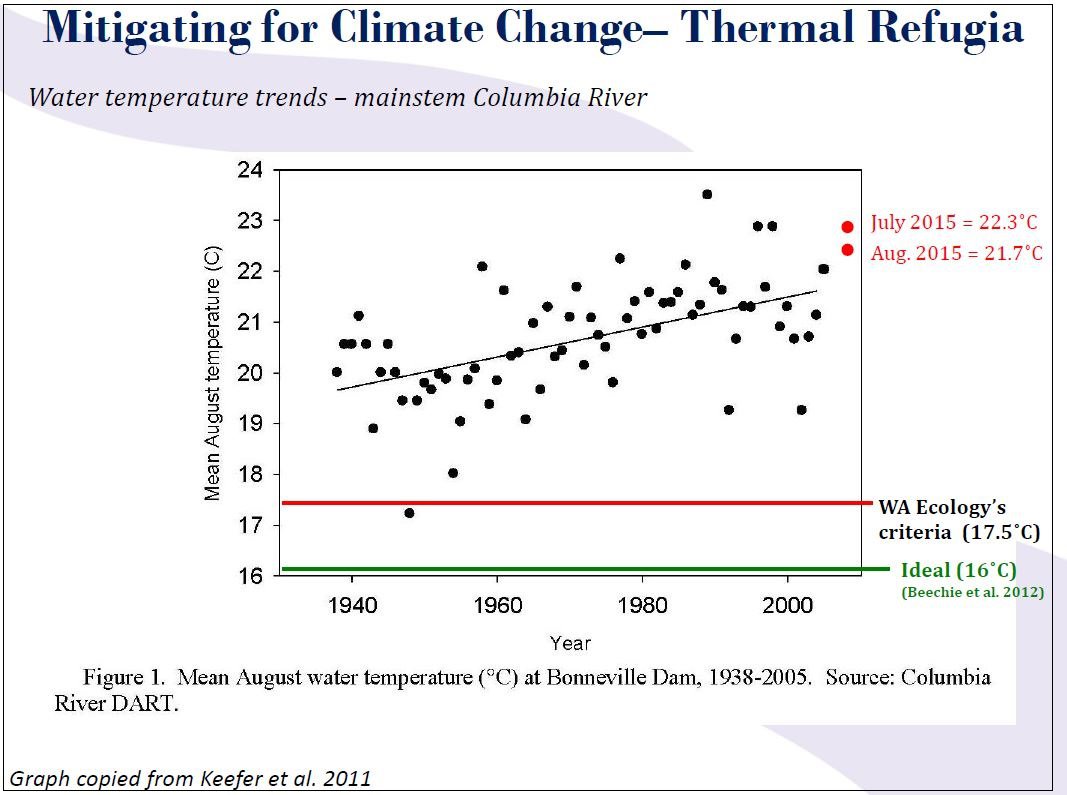Scientist: Begin Preparing Now For Climate Change Impacts Along The Lower Columbia River
- October 16, 2015
- John Harrison

As the climate warms and polar ice continues to melt, sea levels will rise and estuary shorelines, including those along the lower Columbia River, will be inundated. Whether that’s a little or a lot is a matter of speculation, of course, but right now is a good time to start thinking about what the lower river will look like in, say, 50 to 100 years and how people, fish, wildlife, and communities will adapt.
The Council is taking up that issue in its 2014 Columbia River Basin Fish and Wildlife Program, which includes as one of its “emerging program priorities” a directive to account for the potential impacts of climate change on projects that implement the program. The estuary is an obvious place where the effects of rising sea levels will be evident, and that also is an area where the program is implemented in projects that protect and improve shoreline habitat for migrating juvenile salmon and steelhead. Over time, the very places that are being improved today for fish could be underwater, perhaps permanently, before the end of the century.
What then? What should be done now to be ready for the future?
At its October meeting, the Council heard from Catherine Corbett, chief scientist at the Lower Columbia Estuary Partnership (LCEP) about the issue. Corbett and LCEP have been thinking a lot about the lower Columbia and climate change.
Corbett said research by LCEP and others points to some clear conclusions and recommendations, including:
- We need to look beyond the current shorelines when we think about restoring and improving wetland habitats, migrating these areas farther inland because someday our current inland areas are likely to be a lot closer to the main channel of the river.
- The river is likely to continue a warming trend that has been ongoing for decades, as snowpack decreases, runoff comes out of the mountains earlier in the year, and flow volumes continue to decline in the summer months – as was evident this year in July and August when the superheated (for fish) Columbia was blamed for the deaths of a quarter million sockeye and about 20 percent of the harvestable-age sturgeon in the river. Cold water refugia – the mouths of cold-water streams flowing into the river – will become increasingly important for migrating fish, and likely refugia are being evaluated now in the Columbia River Gorge.
- We need to identify those areas that are likely to be flooded – agricultural land, urban areas, shoreline and inland habitats -- and determine where new or improved dikes will be needed and where areas can be left open for the benefit of fish and wildlife, and habitat restored or created.
Corbett’s presentation to the Council and a Council staff memo can be viewed here.


